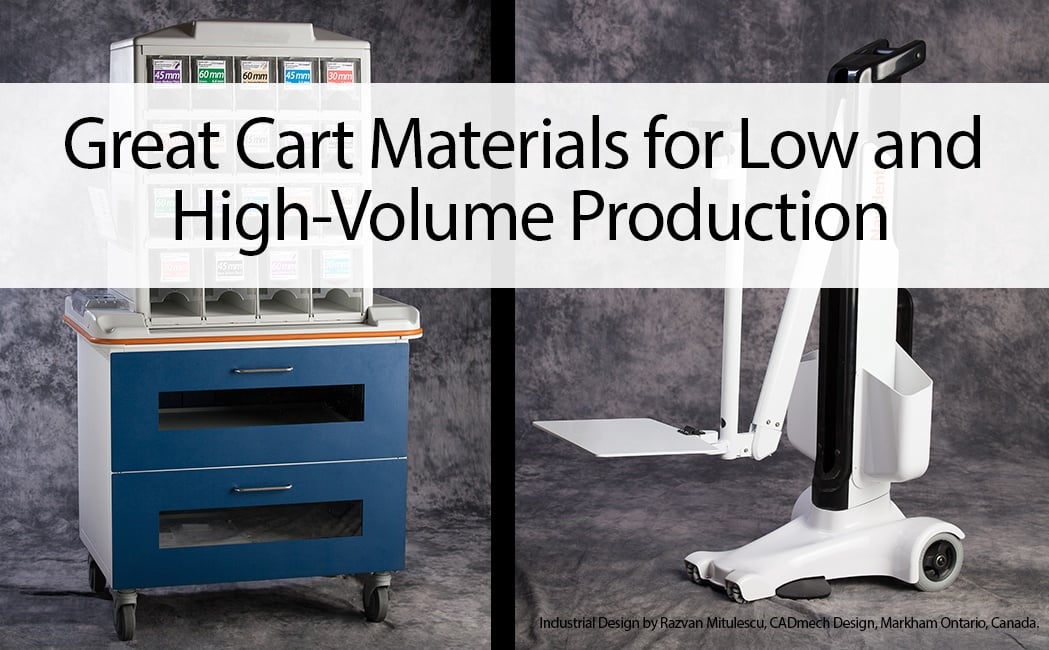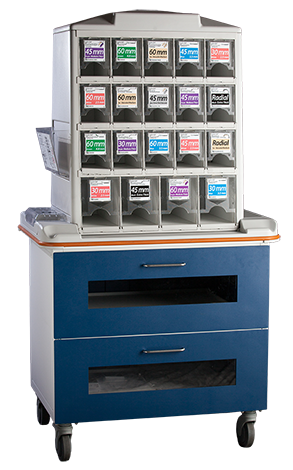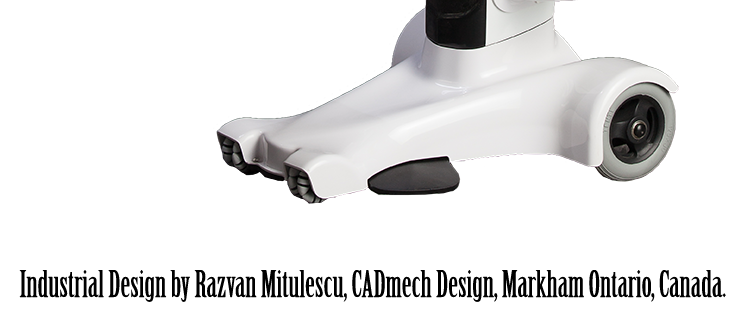As a follow up to last week’s blog about some popular medical cart materials for prototypes and low-volume production, we wanted to cover some materials and processes that are great for both low and high-volume production. To help you make informed decisions on what materials to use for your custom medical cart project, we’ve put together another guide with the pros and cons of the two options.
Medical Cart Materials for Low and High-Volume Production
Sheet Metal
Low-Volume/Prototype and High-Volume/Production
Pros:
- Sheet metal is cost effective for low and high volume production runs.
- It can be designed to add more or less weight, so your cart passes IEC 60601-1 testing.
- You can create versatile designs within the sheet metal’s limits.
Cons:
- It is versatile, but you’re limited on aesthetics.
- If you want a unique shape you have to use a different material.
Thermoform
Low-Volume/Prototype and High-Volume/Production
Pros:
- Thermoform tooling is more cost effective than injection molding, sometimes as much as 1/25 of the cost.
- For prototypes you can create a wood tool, which is even more cost effective for low production runs.
- Aluminum tooling increases the tooling costs, but its makes thermoform great for large production runs as well.
Cons:
- There are limited amounts of undercuts a design engineer can include before injection molding becomes a better choice. The tooling costs start to even out with more undercuts, because the part can no longer come directly out of the tool when there is an undercut. They have to move the tool to create the undercut, so that takes extra time and manpower.
If you need help designing and managing your cart project, HUI’s custom medical cart design team can help you determine the ideal materials and processes for your cart. Contact us today, to learn more about how we can help!
Also, if this information is helpful to you, please subscribe to get instant updates any time we have a new blog post!




